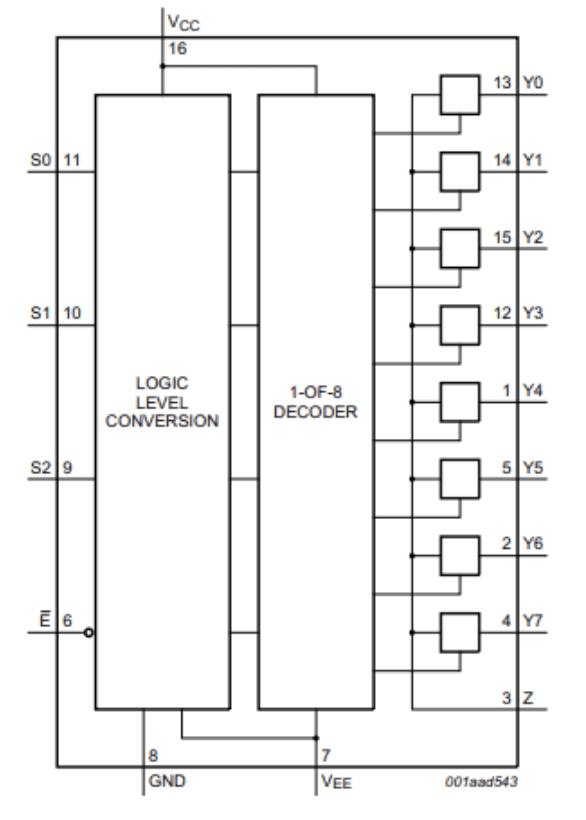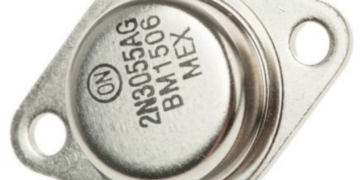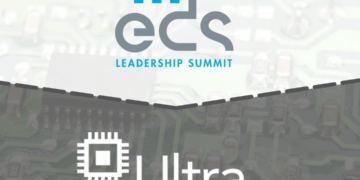
Signal control through switches is a key part of many electronics projects. A project may need to manage many signals into one output or route multiple signals into multiple outputs. Switches that manage many signals into one output are called multiplexers, while switches that route multiple signals into multiple outputs are called demultiplexers. Some switches, like the 74HC4051, can perform both of these functions. Its function relies on the level of voltage present in each of its inputs, a common mechanism in combined multiplexer/demultiplexer switches.
74HC4051 Overview
According to its datasheet, the 74HC4051 is an 8-channel analog/digital multiplexer and demultiplexer. It also has a similar variant called the 74HCT4051. Both of these components, as well as all their variants, function in the same temperature range of -40 to 125 degrees Celsius. They are also oriented similarly, with a row of pins on each long side of the component’s rectangle. There is only one ground for all of the channels, but each channel has its own independent input and output. The 74HC4051 comes in multiple sizes, with widths ranging from 2.5-5.3 mm. Each input includes a clamp diode which allows the component to interface with current limiting resistors, preventing overload when inputs are connected to high voltages.
When handling digital input, the 74HC4051 handles input to each channel through four specific pins labeled E, S0, S1, and S2. If the E (enable) pin is active with a low level of current, the channels are able to receive current. If the E pin is active with a high level of current, this shuts down the component and prevents channels from activating. A combination of states between the S0, S1, and S2 pins determines which of the channels is provided with current. Each of the S (select) pins can be active with high or low current levels, and all three pins must be provided with current in order to use a channel. There is no state that activates a channel where one of the pins is not receiving current.
Applications of the 74HC4051
The applications of the 74HC4501 depend on whether it is being used as a multiplexer or as a demultiplexer. Their applications become more complicated when multiplexers are combined with each other, with demultiplexers, or placed in series. Combinations of multiplexers and demultiplexers can encompass an enormous amount of channels and signals, creating precise controls that a single component couldn’t match. For the sake of simplicity, this article lists the general applications of individual multiplexers and demultiplexers, but designers should be aware of the complexity that can come with using these components. The 74HC4051 can handle all of the functions listed below.
Multiplexers are essential to modern communication. They are common controllers of signals in telemetry, telephone networks, and satellite systems. Radio and television broadcasts also rely on multiplexers to sort out signals and to route the proper information to consumers while minimizing noise. Within computers, multiplexers are key components for data routing. They enable a computer to access data in specific memory locations so it’s not necessary to scan an entire disk in an exhaustive search. Without multiplexers, computers would be much slower.
Demultiplexers are also important to swift communication. People rely on them when recovering lost data from computers or larger data centers. The Arithmetic Logic Unit (ALU) of a computer processor relies on demultiplexers to store its output in the proper computation registers. In finance, ATMs rely on demultiplexers to securely broadcast information. A multiplexer in a communication system often needs the help of a demultiplexer, and they are frequently seen in pairs. Finally, demultiplexers are often found in routers, and they can be bridges between serial and parallel circuits.

Special Considerations When Using the 74HC4051
Although it is possible for any input or output channel to be used in multiplexing or demultiplexing, no channel can do both functions at once. Usually, a single component is devoted to being either a multiplexer or demultiplexer, without splitting channels between functions. It is also rare for an entire component to switch between functions during normal operation. Designers should, in the vast majority of cases, use two separate components if they need both a multiplexer and a demultiplexer within a project. This is true whether the components are being used in an analog or digital context.
Although the 74HC4051 can function at 125 degrees Celsius, some of its components may have difficulty working at that high temperature, resulting in a propagation delay which could affect overall processing speed. The delay is in nanoseconds, but many delays together can add up and impact performance. To remedy this, keep the component’s temperature below 85 degrees Celsius.
When choosing a component, it is important to consider each facet of the component carefully in order to compare and contrast your options effectively. Consider the 74HC4051 if you are looking for a high functioning and widely applicable switch that can handle multiple signals.
Ultra Librarian provides many variants of the 74HC4051, allowing designers precise control of single or multiple signals within their electronics projects. Working with Ultra Librarian takes the guesswork out of preparing your next great device, and puts your ideas on the road to success. Register today for free.







